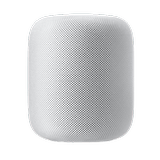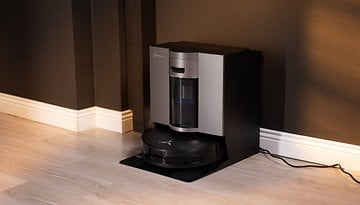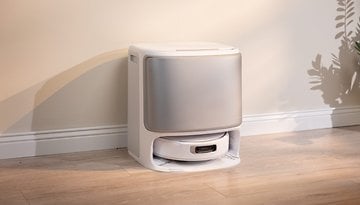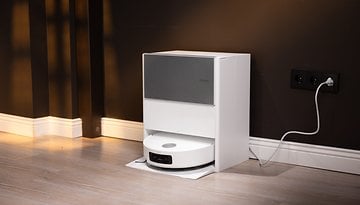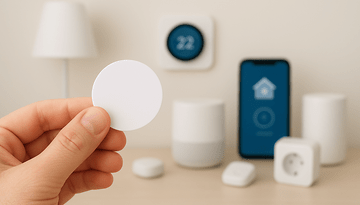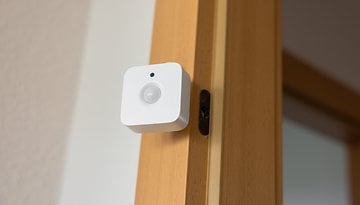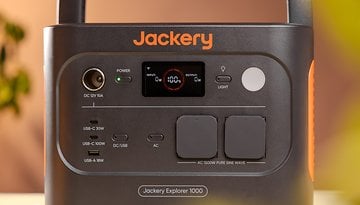Apple HomePod (2023) review: So familiar, yet so fresh and innovative!
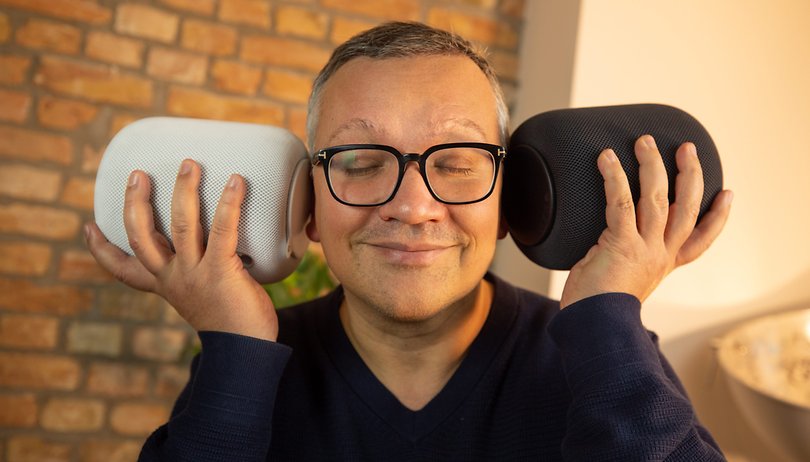

At first glance, the new Apple HomePods appear similar to the old ones. However, when comparing the old and new models side by side, the visual differences become more noticeable, although they still require a second look. When using the new HomePods, however, you'll notice that Apple has made significant improvements to the new speakers. Our NextPit review will clarify what the new Apple HomePods can do, highlight the differences between the old and new models, and determine if the new HomePods are worth the investment.
Good
- Beautiful design
- Great sound experience
- The power cable can be removed and is no longer permanently attached
- Siri has significantly improved in comparison to its previous performance on older HomePods
Bad
- No Bluetooth streaming and no other connectivity options
- Ergo: For Apple users only
- HomePod or HomePod mini? There are not many differences
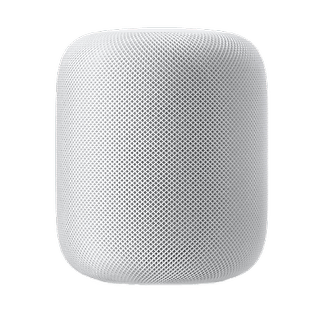
Apple HomePod release date and price
Apple's HomePod (2023) costs almost as much as the predecessor at $299. For comparison: The HomePod mini now costs $99.00. The new HomePod is available now at Apple Store.

Apple HomePod design and build quality
A few years ago, all of this would probably have been unthinkable: a product that first disappears from the market and is then relaunched receives virtually no design upgrade. At least from the outside! Because Apple actually rebuilt everything from the ground up with its Homepod.
I like it:
- Beautiful, no-frills design.
- Very high quality finish.
- Compared to the first generation HomePod, the power cable can be removed.
- Touch interface really appealingly animated by Siri light effects.
I don't like it:
- If you didn't like the design of the first HomePod, it's now easy to continue to dislike it: even with a trained eye, you have to look several times to distinguish the first-generation HomePod from the second one.
The Apple HomePod (2023) is almost 200 grams lighter and four millimeters shorter than its older brother (or sister, for that matter). However, it still weighs around 2.3 kilograms. In addition, the touch surface is not only lower, but also a bit smaller compared to the old HomePod. In general, this is the best visual way to quickly tell the two speakers apart. On the first HomePod, the touch panel was still flush at the top.
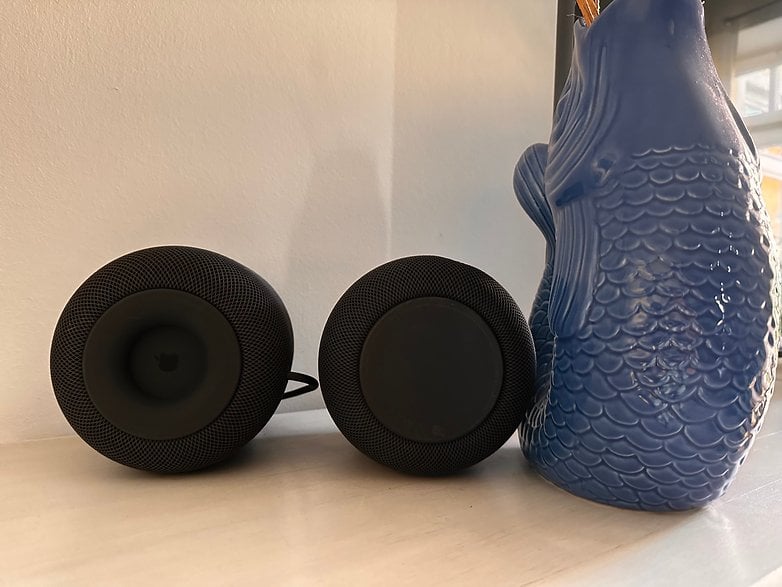
The lighting for Siri has also changed compared to the first model and now resembles the animation of the HomePod mini. Instead of a small round light, the whole panel on top now lights up as soon as you activate Siri. Otherwise, the 2023 version of the HomePod is a real lookalike: It is wrapped in a kind of mesh that gives slightly when you squeeze it—kind of like squeezing Styrofoam. That's why I wouldn't recommend doing it too often ?.
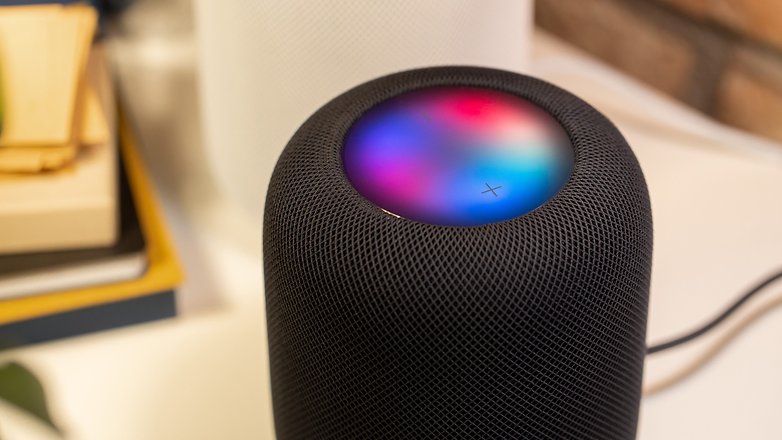
It's amazing how something so small can have such a big impact: I'm enthralled by the power cable!
For me, the most important novelty in the external design: the power cable is now no longer permanently installed, but can be plugged in and unplugged again. Hallelujah! Disconnecting the HomePod from the power source can now be easily done by simply unplugging the cord cable from the speaker. If needed, a new speaker can be connected to a previously removed cable, which is wrapped in high-quality braided material and feels premium, just like the new cables from Apple.

For many, however, this might just be a detail not worth mentioning too much. Let's therefore move on to something more important in general: The actual changes are in the invisible area. Apple has mainly changed the inner workings: Instead of seven tweeters, the new HomePod now only has five.
In addition, four microphones not only listen for commands like "Hey Siri", but also capture the sound waves emitted by the speakers to measure the room. The sound of the speaker should then be perfectly adapted to the respective local conditions. By the way, the old HomePod was supposed to be able to do that, too, but it still needed six microphones for this.
Less is more when it comes to the inner workings
It is very difficult to check whether and how the sound actually changes in the test. But more about how the speakers sound later.
The new HomePod also has a newer chip. Apple uses the S7 chip, which is also used in the Apple Watch Series 7. The predecessor HomePod still had an A8 chip from 2014. The main task of the chip is to digitally shape the sound, but ultimately also to understand and implement commands sensibly. Especially here, the new HomePod has a huge progress and also advantage over the old HomePods.
Smarter home, more reliable commands and sensors
The HomePods (2023) support Matter —let's get that out of the way. NextPit explains what Matter is and why it's important to make sure the smart home products you buy support Matter. HomePods can act as Matter controllers, so you can control any kind of Matter-enabled product.
But there have been other changes in terms of "Siri" as well. I won't go so far as to say that with the new HomePods, all the problems with Siri are gone and she'll always understand me correctly now. But the error rate has (felt; I unfortunately have no statistics) noticeably decreased. The faster processor makes it possible.

What's really cool though (for people who have been using Siri for a long time and sometimes despair of it): You can now set up automations for Siri. It's quite possible that this has been possible for a while and I just didn't notice it. Because that also works with the HomePod Mini or the old HomePod. But if, for example, you want to have the door locked automatically every day (and use a Matter-enabled smart door lock, such as the one from Nuki, for example), a command like "Hey Siri, lock the apartment door every day at 10 p.m." is enough to automate this process.
Along with iOS 16.3, you can now ask the HomePod where friends and family members you share your location with are, but Siri still lags behind compared to other personal assistants in the digital space.
The new HomePod is significantly more performant than its predecessor
The new HomePod performs much better in voice command performance not only compared to its predecessor, but also the HomePod mini. While I was quite used to hearing "one moment" and "I'm still at it" or even "unfortunately, that didn't work" on a regular basis, the commands work unusually fast and mostly reliably with the new HomePod.
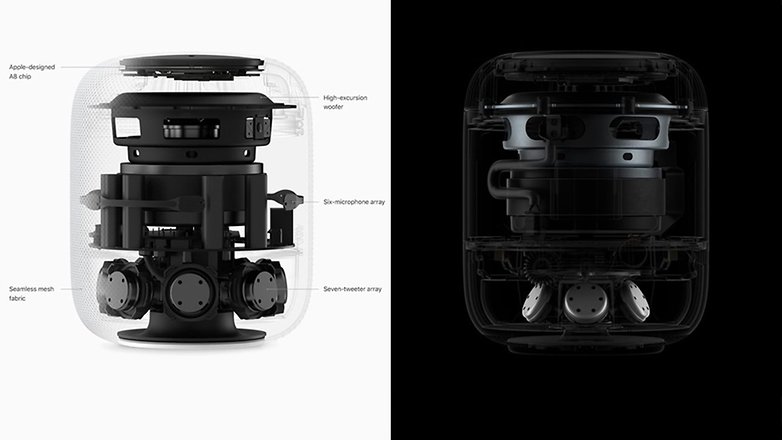
There are now also temperature and humidity sensors built in. This information can then be used, for example, for automations together with smart home products to turn the heating up or down or open a window. In the future, after an update, the second-generation HomePods and the HomePod Mini will also be able to detect smoke or carbon monoxide concentrations and sound the alarm if necessary.
Apple HomePod audio
Actually, I always break one off when it comes to describing to other people whether a speaker or headphones have a good sound. Or not. It's just way too much in the ear of the beholder and personal preferences play a big role. For example, I am a big fan of rich bass and prefer to have a little more of it than too little. But that doesn't have to please everyone.
Music and sound perception is and remains something subjective. Objectively speaking, however, the Homepods sound good —and very good in my eyes. I like the sound, although the sound is unfortunately never really bass-heavy. And here we come to a real disadvantage of the HomePod: There is no possibility to adjust the sound manually. You get what you hear!
For this reason, HomePods are certainly not made for audiophiles. The HomePods also lack connectivity for external devices. So, if you still have vinyl records or CDs at home, you should look for other speakers. In general, HomePods are rather made for those of us who are already at home in the Apple universe or could feel comfortable in it. Of course, you can also use the HomePod with Spotify, Deezer and the like via AirPlay. But the fast and intuitive control via voice is of course only possible with Apple Music.
Otherwise, the real-time tuning strives to create a clear, full balance in the room, which is definitely to my taste. In fact, the first and second generation HomePods sound similar, yet different. A bit more treble here, a bit more powerful bass there. However, I'm sure that no one who liked the sound of the first generation will be disappointed. These are excellent speakers built for what they are meant to be: Smart speakers that should serve well in as many households as possible with many people of different tastes.
And they can and will!

1 + 1 = More!
As with the first generation, the HomePods can be combined as a stereo pair. Then the Apple speakers really show their full power. The sound is fuller—and also compared to the old HomePods. Together with an Apple TV 4K, the pair of speakers can then also be used as a quasi-soundbar to watch movies in Dolby Atmos or Dolby Digital.
But the old HomePods could do that as well. However, the old models repeatedly had pairing errors and other software bugs. This no longer happened with the new version.
Final verdict
The new HomePods are a better re-release of the old HomePods, and they correct the teething troubles of the first generation in many places. It's not the biggest hit yet. But the frustration is now noticeably smaller compared to the old generation—and maybe even disappeared completely. Otherwise, there are also small improvements here and there, like the new sensors. But all in all, the new HomePod seems more like a real reboot for Apple, which completely took the first HomePod out of the lineup two years ago and virtually replaced it with the HomePod mini.
Paying $299, you will get the full sound, especially if you treat yourself to a pair of HomePods and pay $600 for them. Together with an Apple TV 4K, you then have smart, good-sounding speakers and a good soundbar.
For Apple fans and people who are already at home in the Apple world and are looking for new speakers, the new HomePods are a nice addition to home entertainment.
